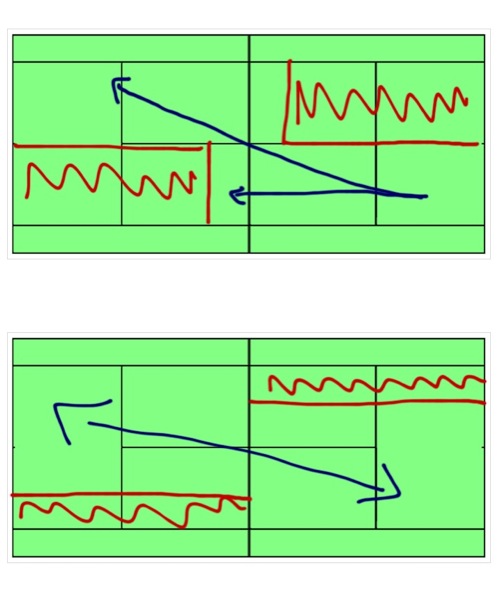Overcoaching: Stop Trying To Save Them
 Saturday, October 22, 2011 at 10:47PM
Saturday, October 22, 2011 at 10:47PM  CAtennis
CAtennis The goal of every player is to become their own coach. Tennis coaching has turned into a multi-million dollar business. How can this be? Was this always the case?
No it wasn't. Tennis coaching is a very fraudulent business. Barriers to entry are extremely low, anyone with a heartbeat, two legs, and work ethic can break into the tennis industry. Tennis coaches can be found in every city across the United States, each with their own philosophy on how to become a champion. The supply and price of tennis coaching over the years has increased, but to no fault of the coaches themselves. The blame is placed on the naive parents who drive the business, looking to gain an edge on their fellow competitors. Parents are supplying a steady income to coaches across the country, hoping to save their children at every corner.
A lot of coaches perpetuate the problem, living paycheck to paycheck, listening and agreeing with the needs and wants of each parent (not to mention giant egos and narcissism) and pushing for more private lessons. In order to stay afloat, some coaches will say or invent just about anything to sound like they can mold and predict the future. Unfortunately, a lot parents are simply too inexperienced to know any better (most are non-athletic living vicariously through their children) and hope to be proactive by Yelping the best tennis coach in town (usually a fraud if he is #1 on Yelp).
*Think of any financial crisis, bubble, hedge fund manager promising 20% return on investment year after year (same idea as tennis)*
Prior to the tennis boom of John McEnroe and Jimmy Connors, coaching was not the business it is today. Players simply went to the club, competed with whoever was around (old ladies, hacks, juniors, anyone with a heartbeat - but mostly against other juniors), and rarely took lessons. Most players picked up tips from watching others compete at the local club, college matches, or good players visiting in the area. They were hungry about learning the game and became true scholars of the sport. A certain pecking order was established within your geographic location where each and every players goal was to climb the ranks. Competition within your club was vicious (those results mattering more than a tournament); nobody was there to help you with technique or to save you (unless you asked and were hungry to win and were willing to put in the extra effort). One learned through observation and experience - which is much more meaningful (longlasting) than having a lesson paid for by your parents (short-term bandaid). The information ingrains itself much deeper when the players discovers the aspects of the game rather than being forced the concept.
Lessons are overrated (especially more than one private lesson a week). Most players played as many sets as they could. The great players would play anyone, anytime, amounting up to 10+ sets a week (the best players didn't care with who, they would make it worthwhile). Competition breeds champions (point system in today's USTA rankings do not promote competition). Lessons do not breed champions. Parents, please stop trying to save your children (not just in tennis, but everything!). Seek to adopt a more detached attitude when it comes to practice sessions and results (not healthy). In addition, please stop coddling them and protecting them from unwanted losses in practices. These are learning experiences and no player in the world has a 100% W/L record (most hover around .500). Let them learn to cope and adapt. Tennis does not have to be a complicated sport and the players are the ones who win championships, not coaches.
*Big apology to all tennis coaches, but we can't expect to have tough players if we are always saving them (because we need a paycheck). Tennis coaches, like players, will learn to adapt and survive. Our primary responsibility should always be on developing players and doing what's best for them while maintaining honesty and integrity towards the students and parents.






